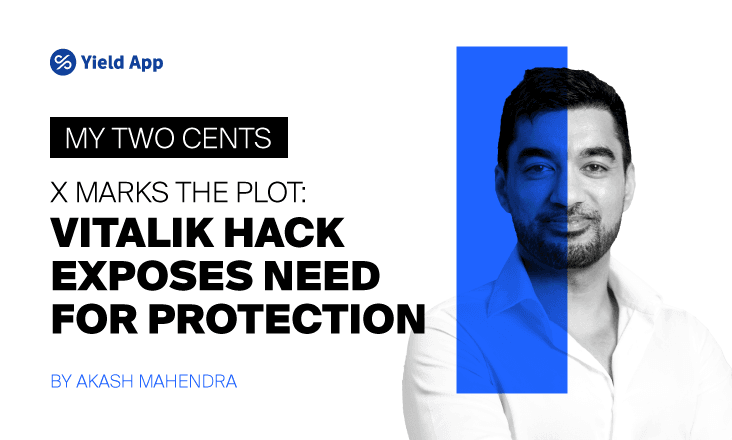Crypto’s latest high-profile scam involved commemorative NFTs and a fake giveaway from Vitalik Buterin’s compromised X account, highlighting an urgent need for robust investor protection
Luckily, Vitalik’s father stepped in to declare on social media that his son’s account had been compromised, but scammers had already taken $691,000 from users
The deception will all but shine a brighter light on the DeFi sector, which has captured the attention of regulators
Unleashing DeFi’s full potential requires both technology and regulation to work together to navigate this rapidly-evolving space
By Akash Mahendra, 13 September 2023
Hackers brazenly walked away with a staggering $691,000 from unsuspecting users who fell victim to a malicious link, strategically placed on the X profile of Ethereum founder, Vitalik Buterin. The link promised access to a collection of commemorative NFTs supposedly launched from Consensys. The bait was simple: connect your wallets to mint.
With his son’s X account compromised, Vitalik’s father, Dmitry Buterin, dutifully relayed the news to the social media network. But not every individual has the luxury of a vigilant parent to detect breaches.
Adding to growing concerns over crypto, a fake $25 million giveaway of “GBTC” was launched over the weekend. The ruse was a nod to Grayscale Bitcoin Trust, which has been on everybody’s lips for weeks as a result of last week’s court victory which could see the trust converted into an ETF.
These incidents, while unfortunate, underscore a glaring hole in our industry. This is the narrative behind Haven1 – the Layer 1 blockchain Yield App is incubating, which will have investor protections at its core. If the appropriate network level guardrails and user KYC controls were in place, such safeguards could have thwarted this breach, and countless others like it.
The episode also shines a spotlight on the infancy of the DeFi sector, which has now firmly captured the attention of regulators. A bill introduced earlier in July aims to “prevent crypto-facilitated crime” by imposing the same regulatory standards on DeFi services, just like their centralized counterparts. Ironically, this approach contracts the very core of DeFi, which has been designed to eliminate the need for third-party intermediaries.
The crux of the matter lies in the fact that lawmakers seem stuck when it comes to envisioning solutions that extend beyond the confines of the traditional financial system. As we navigate these uncharted waters, it’s obvious that innovation in both technology and regulation must go hand-in-hand to truly harness DeFi’s full potential.
 Learn more
Learn more
